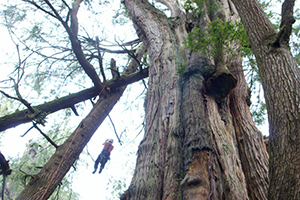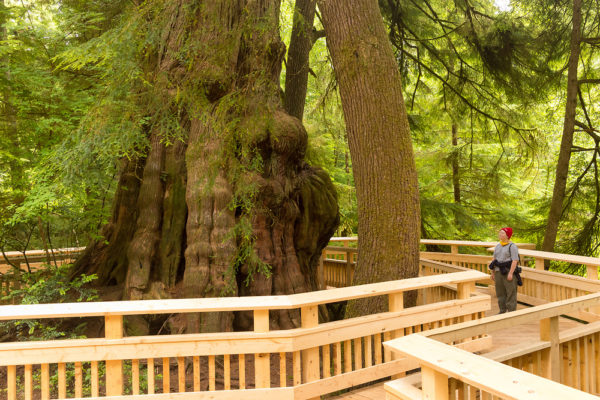
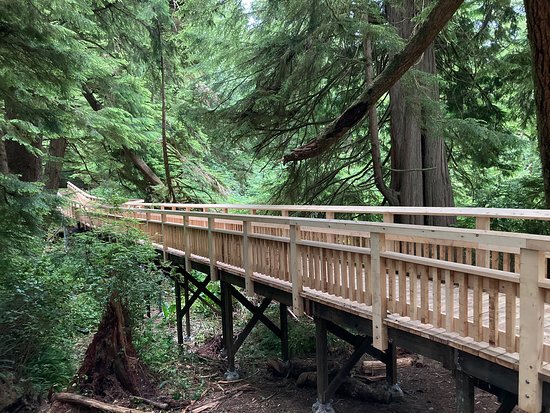
When you get to the end of this previously unknown trail, you’ll find one of the biggest western red cedars in the region. It’s a very easy and beautiful hike, about a mile long. The Rockaway Beach Nature Conservancy Committee installed the very first decking in 2005, which has since been updated by the Rockaway Beach City by means of a grant from ORPD. This trail is wheelchair accessible by means of the trailhead at the corner of Washington St. and Hwy 101. The previous trailhead located at the end of Island St. is no longer accessible.
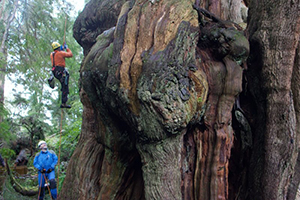
Ascending the Giants is a nonprofit organization that organizes expeditions to measure the largest tree of each species, called champion trees. The Rockaway cedar was chosen because the Old Growth Nature Preserve Committee wanted to know the age and exact measurements of the tree.
There is the urban forest, and then there is the urban forest. Arborists usually use this term to refer to the cumulative effect of the trees in a city. Almost never do they speak of an intact native forest within the urban area, because it is so rare. Although rare, the people of Rockaway Beach, Oregon, know it is not extinct. In the middle of the residential section of town is an ancient cedar bog that contains some extremely large and old western red cedars (Thuja plicata) and Sitka spruce (Picea sitchesis). This is not the urban forest, this is the forest primeval somehow preserved within the city. Furthermore, this type of forest, with large cedars and spruce on flat ground, would have been extremely lucrative to loggers. Today it is very rare to see an old-growth cedar bog anywhere on the Oregon coast.
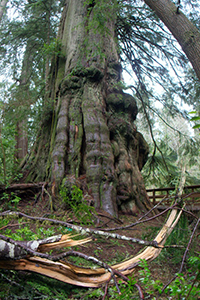
The land was deeded to the Oregon Nature Preserve with restrictive language that stated it was to be used for scientific and educational purposes. Later, the conservancy passed the land to the citizens of Rockaway Beach, who have been careful to keep the land preserved as spelled out in the original deed. Situated on the edge of a bog, the western red cedar is visible from a distance. Due to the lack of signs, or an official trail, the tree and surrounding area are something of a local secret. However, in 2001, the Nature Conservancy Committee was formed that raised funds and built a viewing platform and walkway around the tree to reduce the impact from people walking up to the cedar, compacting the soil, and climbing the root flare. Now people can admire the western red cedar up close without damaging it.
The Ascending Giant organization ultimately measured the Rockaway cedar to be 154 feet tall, 49 feet wide, with a crown spread that added up to a total of 756 points. This is 130 points more than the previous state champion. More importantly, the state of Oregon finally can claim to be the home of one of the elite-size western red cedars, a competitor to the gargantuan coastal cedars of our northern neighbors.
